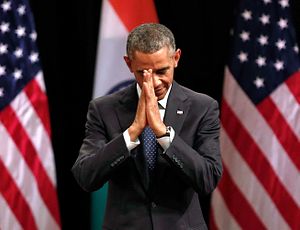Since the United States’ rebalance to Asia was first codified in policy some four years ago, there has been no shortage of criticism and debate surrounding Washington’s diplomatic, economic, and security initiatives in the region. American “hawks” claim the administration of President Barack Obama has not matched its verbal commitments to the region with substantive diplomatic action, trade deals, and – most particularly – defense posture and investments. “Doves,” meanwhile, fret that the rebalance flexes too much American military might in the region, running the risk of provoking China. Both arguments are wrong, and their follow-on debates entirely miss the reality of the U.S. role in Asia. While the rebalance is not, and was not meant to be, a purely military strategy focused on China, it is still real. The United States has no plans to leave Asia.
Grounding 21st-century American foreign policy in Asia has long made eminent sense. Indeed, even in America’s fraught political climate, there remains strong bipartisan consensus on the importance of Asia to U.S. national interests. Maintaining peace and stability in Asia remains vitally central to American prosperity – Asia represents the United States’ largest economic trade partner (outside North America) and is home to six collective defense treaty allies and numerous other important strategic partnerships. Dramatic economic growth across the region, along with a rising and increasingly assertive China, has marked a shift in the regional distribution of power. With these changing economic and geopolitical dynamics also come new opportunities. The rebalance is an acknowledgement that the time is right for Washington to redefine and strengthen U.S. leadership in the Asia-Pacific, allowing it to play a large and persistent role in shaping the region and its future.
On the security side, the rebalance is meant to addresses a laundry list of existing issues: the threat of North Korea and proliferation of weapons of mass destruction; terrorism and piracy; the grave costs of natural disasters to regional and global stability; and the guarantee of continuing peace through the promotion of the rule of law and freedom of navigation. Although tangible evidence does exist to demonstrate Washington’s resolve, the clearest litmus test for the rebalance lies with those countries that stand to be most directly affected. Do the actors and nation states directly affected by the rebalance see the results of Washington’s renewed focus? And do their perceptions match the reality?
Ironically, it seems that China is the country most convinced of the reality of the rebalance, largely because of the perception that Washington is out to counter or contain Chinese strength.

































